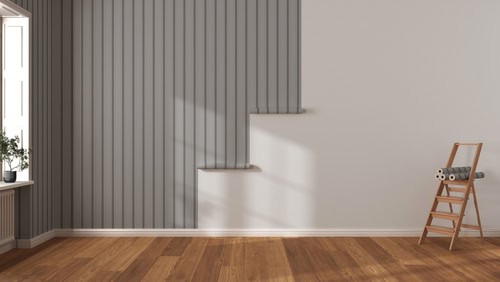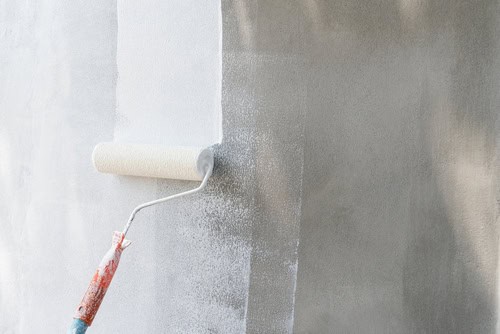
Why Choose Mr Painter As Your Painting Company?
June 2, 2019
Does New Condo Require Painting Service?
June 2, 20196 Tips On How To Paint Your Kitchen Cabinets

Applying fresh coating on your kitchen cabinets will go a long way toward transforming your kitchen without emptying your pockets. Repainting your kitchens old cabinets will give them a newer look that will enhance the appearance of your kitchen. For those who wish to repaint their cabinets, there are two options: You could hire a professional to do it for you for a fee or you may choose to do it yourself. If you choose the latter you will need a guide so that you do it right. So if you have decided to undertake the task by yourself here are 6 tips that will help you achieve the best results.
1. Prepare the kitchen and cabinets for painting
The key to a good paint job in the kitchen is surface preparation. Old kitchen cabinets can be covered with anything from grease to smoke residue. This will prevent the fresh coating from sticking properly causing it to peel off as soon as it dries. So before you start painting the cabinets; empty them, clear the counters and all freestanding appliances. Tables and other movable furniture should be relocated to another room. Rosin paper should be taped over the counters and plastic paper on anything else that could get paint accidentally. You should also mask off the wall surrounding the cabinets. After all this, set up a worktable to be used for painting doors, shelves, and drawers.
2. Remove the drawers, shelves and doors
Unscrew all the doors from the cabinets, pull out the drawers and remove all the shelves. Work methodically placing together and labelling parts removed from the different cabinets to avoid confusion when placing them back. Also remember to number the bottoms of drawers and the ends of the shelves. Remove the pulls and hinges from the doors to avoid getting paint on them. This is necessary so as to ensure that all the hard to reach areas are painted.
3. Clean the cabinet surface
Scrub down all face frames, shelving and doors with an abrasive pad that has been dipped in a liquid deglosser. You could hold a rag under the section you are scrubbing to catch drips and thus reducing the mess that would have been created. Clean away the residue with a deglosser- soaked rag as you scrub the cabinet surfaces. This will remove grease and any other dirt on the old paint in preparation for subsequent works.
4. Fill all the undesired holes on the cabinets and their parts
Fill the holes you want to gets rid with auto-body filler or polyester wood. The filler will take less than five minutes to set so mix it in small batches. Overfill the holes as the filler might shrink as it sets living other gaps. Once it sets, remove all the excess filler using a paint scraper. If the paint scraper does not remove all of it, use sand paper to smooth it out for a neater finish.
5. Sand, vacuum and tack the cabinets and their parts
Sand all the surfaces of the cabinets. Then vacuum them to gets rid the wood- dust particles after the sanding, use a tack cloth to remove any remaining wood dust. Hand sanding is recommended as the paper can be pushed into the open grain. A sanding block or a power sander would have missed this. When you are using a tack cloth, unfold the new cloth down to a single layer and then crumple it for the best dust collection.
6. Use the best equipment available for the job
Do not compromise the quality of the equipment used in painting just to save a few dollars. If you want top notch results, then top of the line equipment must be used. The better the equipment you use, the more professional your work will seem.
Painting kitchen cabinets by yourself can be a long and tedious task that may take up to a month to complete. To avoid disappointment once the job is complete, follow this 6 tips and your results will rival those of a pro. Also make sure that you budget for your time to make sure that each and every second dedicated to the project is properly utilized so as to reduce the time of completion.




